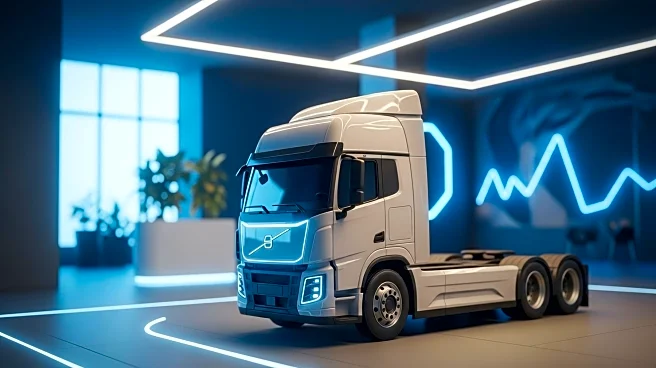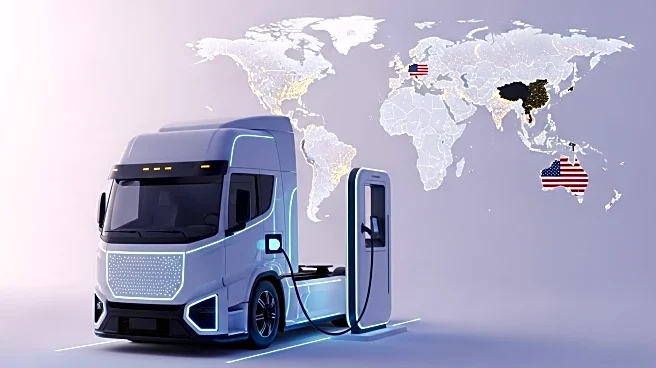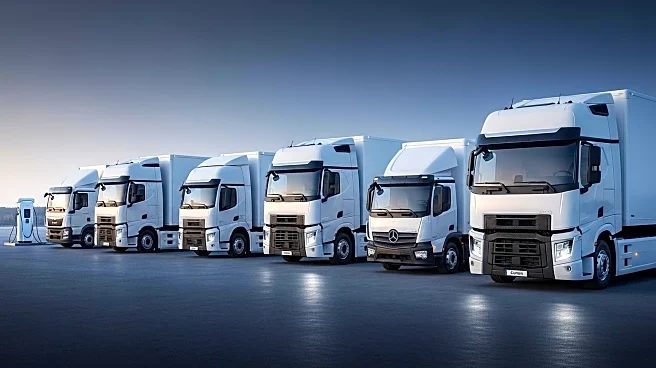What's Happening?
The electric truck market is experiencing rapid growth globally, with projections indicating it will be valued at $29.69 billion in 2025 and reach $124.97 billion by 2030. According to CargoRx, nearly half of medium and heavy-duty trucks will be cheaper to buy, operate, and maintain as zero-emissions vehicles than traditional diesel-powered vehicles by 2030. However, the U.S. market is facing challenges due to policy reversals, resulting in a significant drop in sales. In contrast, China and Europe are seeing strong growth, with China accounting for 90% of global sales. Battery technology improvements and lower operating costs are driving this transition, although the U.S. market is hindered by regulatory changes.
Why It's Important?
The growth of the electric truck market is significant for reducing carbon emissions from the transportation sector, which is a major contributor to global CO2 emissions. The economic benefits of electric trucks, such as lower operating and maintenance costs, are compelling reasons for adoption. However, the U.S. faces setbacks due to policy changes, which could impact its competitiveness in the global market. The transition to electric trucks is crucial for achieving net-zero emissions targets, and the disparity in adoption rates between countries highlights the importance of supportive policies.
What's Next?
The U.S. may need to reconsider its regulatory stance to foster growth in the electric truck market. State-level programs and corporate initiatives continue to support electric truck adoption, indicating potential for recovery. As battery technology advances and infrastructure improves, the market could see increased adoption. The focus will likely be on overcoming policy barriers and enhancing domestic supply chains for truck batteries.
Beyond the Headlines
The shift towards electric trucks could lead to significant changes in the logistics and transportation industries, affecting employment and business models. The environmental benefits are clear, but the transition may also require retraining workers and adapting infrastructure to support new technologies.











